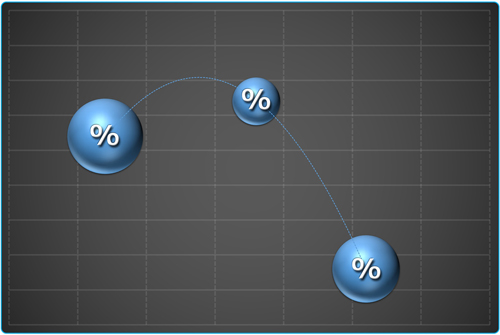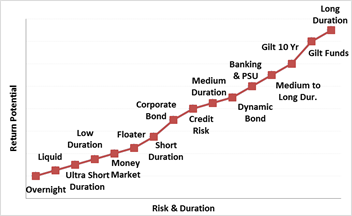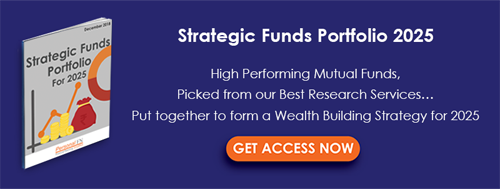 (Image source: Image by Deedster from Pixabay)
(Image source: Image by Deedster from Pixabay)
The RBI reduced policy rate by an unusual 35 bps in its 3rd bi-monthly monetary policy committee meeting held on August 7, 2019, and maintained an accommodative stance. With this, the repo rate is now at 5.4%, down from 6.25% in February 2019. The intent behind the frequent rate cut is to boost consumption, demand, and investment for the growth of the economy.
RBI's decisions are in consonance with the objective of achieving the medium-term target for the consumer price index (CPI) inflation of 4 per cent within a band of +/- 2 per cent, while supporting growth. Inflation is projected to remain within the target over a 12-month ahead horizon.
According to the RBI, the benign inflation outlook provides headroom for policy action to close the negative output gap.
[Read: How To Approach Debt Mutual Funds After RBI's Unusual 35 bps Repo Rate Cut]
But recent floods in various states of India and lag in Kharif sowing may cause food inflation to inch up in the coming months, making interest rate scenarios a bit uncertain. If this or any other factor causes CPI inflation to move beyond its comfort zone, it may dampen hopes of further rate cuts.
In this uncertain market environment and the lack of clarity about the further rate cuts, would it be an opportune time to invest in dynamic bond funds?
Let's first understand what dynamic bond funds are
According to SEBI categorisation norms, dynamic bond funds are open-ended dynamic debt schemes that invest across duration. These funds have the flexibility to invest in short-term instruments, such as commercial paper (CP) and certificates of deposit (CD), or long-term instruments, such as corporate bonds and gilt securities.
When the interest rates are falling, long-term instruments tend to perform well; while in the rising interest rate scenario, short-term instruments tend to perform better. If a dynamic bond fund anticipates an escalating interest rate scenario, it will have a low duration and vice-a-versa. Thus, it can take advantage of changing rates and invest accordingly to create an all-season portfolio.
[Read: Are You Holding Debt Mutual Funds With Stressed Assets?]
Risk involved
The performance of dynamic bond funds largely depends on the fund manager's perception of the interest rate movement. If the manager fails to accurately gauge the movement of interest rates, or is unable to time the investment precisely, investors may suffer losses. Further, the fund must be able to perform well on the short and long ends of the duration to generate higher returns.
Graph: Risk-return trade-off of debt funds

(Source: PersonalFN research)
Dynamic bond funds are riskier than credit risk funds and medium duration funds. Only sector specific debt funds and long duration funds carry more risk as compared to dynamic bond funds.
[Read: Here's Why Debt Mutual Fund Investors Are Cashing Out]
How have dynamic bond funds fared
Table: Performance of dynamic bond funds across timeframes...
Data as on August 27, 2019
Direct plan-Growth option considered
(Source: ACE MF)
The average category returns of dynamic bond funds lagged the Crisil Composite Bond Fund Index across periods. However, some schemes did manage to perform consistently well across periods. Performance of most schemes was in line with that of Crisil Composite Bond Fund Index in the 3-year and 5-year period. In the last one year, several schemes have generated double-digit returns.
Who should invest?
Though these are riskier, dynamic bond funds have the potential to generate higher returns. The fund has the flexibility to align the holdings with the market conditions - after mainly considering interest rate and assessment of credit risk. Thus, invest only if you can handle volatility and if your investment horizon of around three years, while approaching these type of funds.
Since the fund manager of dynamic bond funds chiefly banks on the interest rate movement and doesn't prefer to hold bonds up to maturity, dynamic bond funds can generate attractive returns when the interest rates are expected to fall. If RBI continues to reduce rates, dynamic bond funds may have a good run going forward.
But if the interest rates rise, the fund can decrease the duration to mitigate the impact of fall in prices.
[Read: How SEBI's New Norms For Debt Mutual Funds Make a High Impact]
Sensible approach to invest in debt funds...
Investing in debt funds are not risk free. You should consider your financial goals, risk appetite, investment horizon, and liquidity requirements before investing in debt funds.
Long-term debts are generally riskier. Nevertheless, if you wish to take the risk and exposure at the longer end of the yield curve, consider dynamic style funds that have the flexibility to move across maturities of debt papers as per the interest rate scenario.
But if you cannot handle volatility, consider investing in short-duration debt funds.
In the recent past, many debt funds across maturity profiles had exposure to downgraded and toxic debt papers exposing investors to investment risk. Thus approach debt funds with your eyes wide open. Invest in schemes offered by process-driven fund houses.
One should analyse the schemes on quantitative and qualitative parameters and take into consideration interest rate and credit risk involved while investing in debt funds.
Editor's note: If you are looking for high rewards with moderate risk, consider PersonalFN's Premium Report, "The Strategic Funds Portfolio For 2025(2019 Edition)".
With this, you gain access to a ready-made portfolio of top recommended equity mutual funds for 2025 based on the Core & Satellite approach to investing.

If you haven't subscribed yet, do it now!
Add Comments